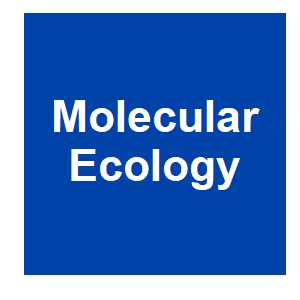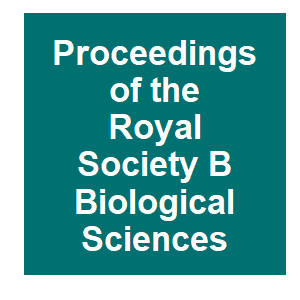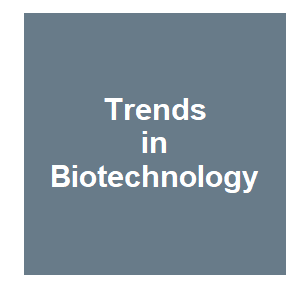
Keywords: conservation

|
Can Gene Drive Address Health and Conservation Challenges in the Philippines?Kristine Grace N. Tome, Science Speaks, 2023.
ISAAA Inc., in partnership with the Outreach Network for Gene Drive Research and the Malaysian Biotechnology Information Centre (MABIC), gathered approximately 834 online participants during the webinar Genetic Tools for Conservation and Health: What's the Role of Gene Drives? ... Keywords: conservation, gene drive synthetic, mice, population suppression, t haplotype |

|
Research breakthrough in genetic biocontrol striving to transform pest management: Centre for Invasive Species SolutionsARR News, Australian Rural and Regional News, 2023.
A potential new non-lethal and ethical approach to control invasive mammal pests was showcased at a briefing held at the South Australian Health and Medical Research Institute in Adelaide on Tuesday 31 October. Hosted by the Centre for Invasive Species Solutions and the ... Keywords: conservation, gene drive synthetic, mice, population suppression, t haplotype |

|
Genetic tools for conservation and health: What’s the Role of Gene Drive?ISAAA, Institute of Agricultural Science for Southern Viet Nam, 2023.
The potential uses and impacts of gene drive technologies have garnered increasing interest at the international and national levels across the world. As part of the effort to contribute to an informed debate around gene drive technologies, the Outreach Network for Gene Drive ... Keywords: conservation, gene drive synthetic, mice, population suppression, t haplotype |

|
Millions of Mosquitoes Will Rain Down on Hawaii to Save an Iconic BirdS. Wild, Scientific American, 2023.
Millions of mosquitoes dropped from helicopters could be the greatest hope for Hawaii’s iconic honeycreepers. At least four species of the brightly colored birds could go extinct within the year if no action is taken to save them. “We’re seriously in a race against time at ... Keywords: conservation, gene drive synthetic, mice, population suppression, t haplotype |

|
Assessing the suitability of YY males and ZZ females as an invasive species population control method across life historiesR. A. Erickson, H. M. Thompson, S. A. Kageyama, G. M. Andriacchi, A. R. Cupp, R. Patiño and J. J. Amberg, Biological Invasions, 25:3737-3751. 2023.
Natural resource managers use tools to control invasive species. In theory, stocking YY males or ZZ females would allow managers to skew sex ratios until populations collapse. In combination with other suppression methods, such as removal, this approach could be incorporated into ... Keywords: conservation, gene drive synthetic, mice, population suppression, t haplotype |

|
Novel Conservation Strategies to Conserve Australian MarsupialsS. Legge, M. Hayward and A. Weeks, American and Australasian Marsupials, 2023.
The Australian marsupial fauna has been devastated in the past 250 years, mainly due to impacts from invasive mammalian predators (cats and foxes), although other threats such as invasive herbivores, habitat loss and fragmentation, changes to fire regimes, and now climate change ... Keywords: conservation, gene drive synthetic, mice, population suppression, t haplotype |

|
Draft environmental assessment released for using modified mosquitoes to save native birds on KauaʻiAnonymous, Big Island NOW, 2023.
Today, the draft environmental assessment was made public for the use of Wolbachia-based incompatible male mosquitoes on Kauaʻi to stop the spread of avian malaria that is decimating native forest bird populations. The public has 31 days — from June 23 until July 24 — to ... Keywords: conservation, gene drive synthetic, mice, population suppression, t haplotype |

|
Draft environmental assessment for use of Wolbachia-based incompatible insect technique for the suppression of nonnative southern house mosquito populations on KauaʻiHawai'i Department of Land and Natural Resources, Hawai'i Department of Land and Natural Resources, 2023.
The State of Hawai'i Department of Land and Natural Resources hereby transmits the Draft Environmental Assessment and Anticipated Finding of No Significant Impact (DEAEnvironmental Assessment for use of Wolbachia-based Incompatible Insect Technique for the suppression of ... Keywords: conservation, gene drive synthetic, mice, population suppression, t haplotype |

|
How genomics can help biodiversity conservationK. Theissinger, C. Fernandes, G. Formenti, I. Bista, P. R. Berg, C. Bleidorn, A. Bombarely, A. Crottini, G. R. Gallo, J. A. Godoy, S. Jentoft, J. Malukiewicz, A. Mouton, R. A. Oomen, S. Paez, P. J. Palsbøll, C. Pampoulie, M. J. Ruiz-López, S. Secomandi, H, Trends in Genetics, 2023.
Genomics provides effective tools to characterize biodiversity, but the full implementation of genomic techniques in practical conservation is still limited. We review some of the main approaches in biodiversity genomics available to conservationists and genomicists.High-quality, ... Keywords: conservation, gene drive synthetic, mice, population suppression, t haplotype |

|
Gene drive-mediated population elimination for biodiversity conservation. When you come to a fork in the road, take itB. A. Hay and M. Guo, Proceedings of the National Academy of Sciences, 119:e2218020119. 2022.
How can the ability of t w2 to spread at super-Mendelian frequencies be utilized even if it is unable to directly drive the population to an unfit state? Gierus, Birand, and colleagues proposed placing Cas9 and a gRNA at a neutral position within the t haplotype. In this hybrid ... Keywords: conservation, gene drive synthetic, mice, population suppression, t haplotype |

|
New CRISPR tech makes it possible to wipe out invasive mice, 2022.Keywords: conservation, gene drive synthetic, mice, population suppression, t haplotype |

|
East Maui project hopes mosquito v. mosquito mating battle will save endangered birdsK. Cerizo, MAUINOW, 2022.
Keywords: conservation, gene drive synthetic, mice, population suppression, t haplotype |

|
Should NZ use contentious gene tech in our war on pests?J. Morton, NZ Herald, 2022.
Gene-altering technology could offer “breakthrough opportunities” for saving our pest-threatened species, a new future-scoping report says, but there’d be some tricky issues to address before it’d be a realistic option. Scientists have already been exploring how these ... Keywords: conservation, gene drive synthetic, mice, population suppression, t haplotype |

|
Gene drive could be used to wipe out invasive mice on islandsM. Le Page, NewScientist, 2022.
For the first time, researchers have created a gene drive – a kind of genetic parasite – that could be used to eradicate mammalian pests such as mice by making them infertile. The technology could provide a humane alternative to the poison baits currently used to tackle ... Keywords: conservation, gene drive synthetic, mice, population suppression, t haplotype |

|
World first trial to eradicate mice through gene modificationI. Mannix, COSMOS, 2022.
Mouse populations could be eradicated in some areas through new gene modification technology to render female mice infertile. The technology – called t-CRISPR – was previously developed to target malaria-transmitting mosquitoes. This is the first proof of concept for its use ... Keywords: conservation, gene drive synthetic, mice, population suppression, t haplotype |

|
SHOULD WE CREATE GENE DRIVE GREY SQUIRRELSS. Hartley and T. Law, GeneDriveGovernance.org, 2022.
UK scientists have proposed gene drive as a management tool to control grey squirrels. Now is a good time to talk about this emerging technology because the hopes and concerns of experts, stakeholders and the public can help to determine if or how it might be developed. To help ... Keywords: conservation, gene drive synthetic, mice, population suppression, t haplotype |

|
Gene drive technology to suppress invasive miceUniversity of Adelaide, Phys Org, 2022.
Researchers at the University of Adelaide have released their first findings on the potential effectiveness of revolutionary gene drive technology to control invasive mice. The team has developed a world-first proof of concept for the technology—called t-CRISPR—using ... Keywords: conservation, gene drive synthetic, mice, population suppression, t haplotype |

|
Leveraging a natural murine meiotic drive to suppress invasive populationsL. Gierus, A. Birand, M. D. Bunting, G. I. Godahewa, S. G. Piltz, K. P. Oh, A. J. Piaggio, D. W. Threadgill, J. Godwin, O. Edwards, P. Cassey, J. V. Ross, T. A. A. Prowse and P. Q. Thomas, Proceedings of the National Academy of Sciences, 119:e2213308119. 2022.
Invasive rodents are a major cause of environmental damage and biodiversity loss, particularly on islands. Unlike insects, genetic biocontrol strategies including population-suppressing gene drives with biased inheritance have not been developed in mice. Here, we demonstrate a ... Keywords: conservation, gene drive synthetic, mice, population suppression, t haplotype |

|
Why we need to talk about ‘gene-drive’ grey squirrelsL. Clarke, DevonLive, 2022.
Would the best way of controlling the UK’s rampant grey squirrel population be to spread genetic changes throughout the species? A new research film, to be shown next month at Exeter Phoenix, sees scientists, conservation and wildlife experts debate the use of emergent ... Keywords: conservation, gene drive synthetic, mice, population suppression, t haplotype |

|
Why we need to talk about ‘gene-drive’ grey squirrelsAnonymous, University of Exeter, 2022.
Would the best way of controlling the UK’s rampant grey squirrel population be to spread genetic changes throughout the species? A new research film, to be shown next month at Exeter Phoenix, sees scientists, conservation and wildlife experts debate the use of emergent ... Keywords: conservation, gene drive synthetic, mice, population suppression, t haplotype |

|
Humans Have a Long History of Making ‘Very Bad Decisions’ to Save AnimalsT. McDonnell, The New York Times, 2022.
Environmental reporter Tim McDonnell on the potential negative consequences of animal conservation efforts. McDonnell highlights Target Malaria’s research on gene drive to “eliminate malaria-carrying mosquitos” and quotes New Zealand researcher Philipp Messer saying that ... Keywords: conservation, gene drive synthetic, mice, population suppression, t haplotype |

|
Genetically-enhanced biocontrols can help fight large invasive mammalsPensoft Publishers, Science Daily, 2022.
A team of researchers from the University of Adelaide developed a mathematical model able to simulate the impact of gene drives on mammal populations at a landscape scale. Published in the open-access NeoBiotajournal, their study is the first to estimate the time it would take to ... Keywords: conservation, gene drive synthetic, mice, population suppression, t haplotype |

|
Scalability of genetic biocontrols for eradicating invasive alien mammalsA. Birand, P. Cassey, J. V. Ross, P. Q. Thomas and T. A. A. Prowse, NeoBiota, 74:93-103. 2022.
CRISPR-based gene drives offer novel solutions for controlling invasive alien species, which could ultimately extend eradication efforts to continental scales. Gene drives for suppressing invasive alien vertebrates are now under development. Using a landscape-scale ... Keywords: conservation, gene drive synthetic, mice, population suppression, t haplotype |

|
Do Australians support genetic technology to control feral animals?E. Phiddian, COSMOS, 2022.
Synthetic biology and genetic technology could be a safer, more humane way of curbing invasive species. Feral cat populations, for instance, could be controlled by preventing them from breeding. But there’s no point trying a new technology it if it doesn’t have public ... Keywords: conservation, gene drive synthetic, mice, population suppression, t haplotype |

|
Public perspectives towards using gene drive for invasive species management in AustraliaA. Mankad, E. V. Hobman and L. Carter, CSIRO, 2022.
Many pest animal species live and reproduce in high numbers across Australia. This includes animal species, such as cane toads, feral cats, foxes, rodents, wild pigs, wild rabbits. These species significantly damage Australia’s agricultural industries, natural landscapes, and ... Keywords: conservation, gene drive synthetic, mice, population suppression, t haplotype |

|
Breeding out the feral cat problemS. Schmidt, ECOS, 2022.
While feral cats have only existed as part of Australia’s ecosystem for the last 200 or so years, they’ve left a destructive mark on our landscape. They’ve contributed to a growing list of Australian native animals that have become threatened or extinct in that time. ... Keywords: conservation, gene drive synthetic, mice, population suppression, t haplotype |

|
The suppressive potential of a gene drive in populations of invasive social wasps is currently limitedA. B. Meiborg, N. R. Faber, B. A. Taylor, B. A. Harpur and G. Gorjanc, bioRxiv, 2022.06.27.497711. 2022.
Social insects are very successful invasive species, and the continued increase of global trade and transportation has exacerbated this problem. The yellow-legged hornet, Vespa velutina nigrithorax (henceforth Asian hornet), is drastically expanding its range in Western Europe. ... Keywords: conservation, gene drive synthetic, mice, population suppression, t haplotype |

|
Australians open to using genetic technology to manage feral catsCSIRO, MIRAGE, 2022.
New genetic technologies could help address the rise of invasives through a number of ways, one of which is called gene drive. Gene drive can determine the sex of offspring, reducing the number of animals able to reproduce, and therefore over time driving down populations. ... Keywords: conservation, gene drive synthetic, mice, population suppression, t haplotype |

|
Natural and Engineered Sex Ratio Distortion in InsectsA. Compton and Z. Tu, Frontiers in Ecology and Evolution, 10. 2022.
Insects have evolved highly diverse genetic sex-determination mechanisms and a relatively balanced male to female sex ratio is generally expected. However, selection may shift the optimal sex ratio while meiotic drive and endosymbiont manipulation can result in sex ratio ... Keywords: conservation, gene drive synthetic, mice, population suppression, t haplotype |

|
Generation of Gene Drive Mice for Invasive Pest Population SuppressionM. D. Bunting, C. Pfitzner, L. Gierus, M. White, S. Piltz and P. Q. Thomas, Applications of Genome Modulation and Editing, 2022.
Gene drives are genetic elements that are transmitted to greater than 50% of offspring and have potential for population modification or suppression. While gene drives are known to occur naturally, the recent emergence of CRISPR-Cas9 genome-editing technology has enabled ... Keywords: conservation, gene drive synthetic, mice, population suppression, t haplotype |

|
Mosquito control to save Hawaiian honeycreepers does not involve GMOsDepartment of Land and Natural Resources, Hawaii Department of Land and Natural Resources, 2022.
Despite misinformation circulating on social media, the importation of “incompatible-male” mosquitoes to control populations of wild mosquitoes and to save four native bird species from extinction, does not involve the use of any genetically modified organisms (GMOs) or ... Keywords: conservation, gene drive synthetic, mice, population suppression, t haplotype |

|
Leveraging a natural murine meiotic drive to suppress invasive populationsL. Gierus, A. Birand, M. D. Bunting, G. I. Godahewa, S. G. Piltz, K. P. Oh, A. J. Piaggio, D. W. Threadgill, J. Godwin, O. Edwards, P. Cassey, J. V. Ross, T. A. A. Prowse and P. Q. Thomas, bioRxiv, 2022.05.31.494104. 2022.
Invasive rodents, including house mice, are a major cause of environmental damage and biodiversity loss, particularly in island ecosystems. Eradication can be achieved through the distribution of rodenticide, but this approach is expensive to apply at scale, can have negative ... Keywords: conservation, gene drive synthetic, mice, population suppression, t haplotype |

|
What role can gene editing play in predator control? And are we ready to accept it?K. Green, Stuff, 2022.
The once-forbidden concept of gene editing for predator control is back on the table after two projects receivedGovernment funding. Despite advances overseas, experts are worried research in New Zealand will never make it out of the lab, with no plans to change current ... Keywords: conservation, gene drive synthetic, mice, population suppression, t haplotype |

|
The principles driving gene drives for conservationS. Hartley, R. Taitingfong and P. Fidelman, Environmental Science and Policy, 135:36-45. 2022.
Gene drive technology is an emerging biotechnology with the potential to address some of the most intractable global biodiversity conservation issues. Scientists are exploring potential gene drive applications for managing invasive species and building resilience in keystone ... Keywords: conservation, gene drive synthetic, mice, population suppression, t haplotype |

|
Track New Zealand’s Bid to Take Back NatureK. Peek, Scientific American, 2022.
A thousand years ago the islands that today form New Zealand were riotously wild. Birds, reptiles and invertebrates flourished in lush forests hundreds of miles from any other landmass. Māori settlers in the 1200s brought Polynesian rats for food, and together the humans and the ... Keywords: conservation, gene drive synthetic, mice, population suppression, t haplotype |

|
Gene drives for vertebrate pest control: realistic spatial modelling of eradication probabilities and times for island mouse populationsA. Birand, P. Cassey, J. V. Ross, J. C. Russell, P. Thomas and T. A. A. Prowse, Molecular Ecology, 2022.
Abstract Invasive alien species continue to threaten global biodiversity. CRISPR-based gene drives, which can theoretically spread through populations despite imparting a fitness cost, could be used to suppress or eradicate pest populations. We develop an individual-based, ... Keywords: conservation, gene drive synthetic, mice, population suppression, t haplotype |

|
Scientists expand CRISPR-Cas9 genetic inheritance control in mammalsM. Aguilera, Phys Org, 2022.
Led by graduate student Alexander Weitzel, Grunwald, Cooper and their colleagues have now succeeded in developing CRISPR-Cas9 inheritance control in male mice by shifting the gene editing window to more closely match the timing of meiosis in both sexes. Their results were ... Keywords: conservation, gene drive synthetic, mice, population suppression, t haplotype |

|
How sci-fi weapon could stop grey squirrels killing Britain’s treesrymeradelle, INentertainment, 2021.
Grey squirrels pose the greatest threat to British foresters at the moment. They eat the bark of trees, leaving them to die. Picture: Grey squirrel perched on a tree It’s bad enough watching Britain’s ash trees wither from the ash dieback fungus now ravaging our countryside. ... Keywords: conservation, gene drive synthetic, mice, population suppression, t haplotype |

|
New developments in the field of genomic technologies and their relevance to conservation managementG. Segelbacher, M. Bosse, P. Burger, P. Galbusera, J. A. Godoy, P. Helsen, C. Hvilsom, L. Iacolina, A. Kahric, C. Manfrin, M. Nonic, D. Thizy, I. Tsvetkov, N. Veličković, C. Vilà, S. M. Wisely and E. Buzan, Conservation Genetics, 2021.
Recent technological advances in the field of genomics offer conservation managers and practitioners new tools to explore for conservation applications. Many of these tools are well developed and used by other life science fields, while others are still in development. ... Keywords: conservation, gene drive synthetic, mice, population suppression, t haplotype |

|
A Golden MenaceS. Moutinho, Science, 2021.
An even bigger catastrophe looms: the invasion of the Amazon and its tributaries, part of the largest drainage basin in South America, which spans eight countries and is one of the richest hot spots for biodiversity on the planet. Golden mussels have been documented in the ... Keywords: conservation, gene drive synthetic, mice, population suppression, t haplotype |

|
Genetically-modified possums and all-in-one trapping machines: funding for new predator-free studiesA. Allott, stuff, 2021.
Research into possum genes and creating an all-in-one predator detecting, luring, and trapping machine are among a handful of projects to receive new funding to help bring them into reality. Predator Free 2050 has awarded $2.4 million in Jobs for Nature funding to six ... Keywords: conservation, gene drive synthetic, mice, population suppression, t haplotype |

|
Faut-il miser sur le forçage génétique contre les espèces invasives?P. Minet, Le Temps, 2021.
Un «gene drive» peut servir à annihiler complètement et rapidement une population d’animaux indésirables. Prometteuse pour lutter contre les espèces invasives, cette technologie a fait l’objet d’âpres débats dans le cadre du congrès mondial de la nature à ... Keywords: conservation, gene drive synthetic, mice, population suppression, t haplotype |

|
Scientists debate promise, peril of tweaking wild genomesJ. Zamora, Phys Org, 2021.
In the movie Jurassic Park, reconstructing and tweaking genetic material makes it possible to bring dinosaurs back to life. Today, a technology that manipulates animal genomes, called gene drive, has become a reality. The goal, however, is not to revive long-gone species, but to ... Keywords: conservation, gene drive synthetic, mice, population suppression, t haplotype |

|
Invasive Mice and Engineered GenesW. M. Adams and K. H. Redford, Yale University Press Blog, 2021.
On Gough Island, a steep speck of land deep in the South Atlantic, giant mice eat albatross chicks as they sit on their nests. They are house mice, accidental arrivals on the ships of long-dead sealers. But they have lost their secretive, timid, mousy ways. Over numerous ... Keywords: conservation, gene drive synthetic, mice, population suppression, t haplotype |

|
World Nature Conservation Day: Technology to Forge a Path for Nature Conservation and CommunitiesP. Becker, Isand Conservation, 2021.
Gene drives are a genetic phenomenon that occurs in nature and causes a gene or trait to have a greater than 50% chance of inheritance. Island Conservation and partners have formed the Genetic Biocontrol of Invasive Rodents (GBIRd) partnership, to explore the technical and social ... Keywords: conservation, gene drive synthetic, mice, population suppression, t haplotype |

|
Gene Drive: The Technology and its Potentials for Biodiversity ConservatioZ. Bugnosen, Science Speaks, 2021.
Gene drive is a gene editing tool that is rapidly advancing as scientists investigate further its potentials to address concerns related to agriculture, the environment, and even human health. To help the public understand it better, ISAAA and its network of Biotechnology ... Keywords: conservation, gene drive synthetic, mice, population suppression, t haplotype |

|
First evidence of deviation from Mendelian proportions in a conservation programmeC. E. Grueber, K. A. Farquharson, B. R. Wright, G. P. Wallis, C. J. Hogg and K. Belov, Molecular Ecology, 13. 2021.
Classic Mendelian inheritance is the bedrock of population genetics and underpins pedigree-based management of animal populations. However, assumptions of Mendelian inheritance might not be upheld in conservation breeding programmes if early viability selection occurs, even when ... Keywords: conservation, gene drive synthetic, mice, population suppression, t haplotype |

|
Cloning wildlife and editing their genes to protect them and us.H. Thomasy, NEO-LIFE, 2021.
In December 10, 2020, Elizabeth Ann made history just by being born. She isn’t a British royal, an American married to a British royal, a movie star’s daughter, or even human for that matter. Elizabeth Ann is a ferret—but perhaps the most famous ferret of all time. More ... Keywords: conservation, gene drive synthetic, mice, population suppression, t haplotype |

|
The science & ethics of gene drive technology from a conservation & development perspectiveRenew Europe, Renew Europe, 2021.
This hearing intends to examine gene-drive technology and its possible impacts, including unintended ones and reveal the complexity of an unknown technology with inherent uncertainties. Scientists from different backgrounds in the field of gene-drive research will present most ... Keywords: conservation, gene drive synthetic, mice, population suppression, t haplotype |

|
Designing gene drives to limit spillover to non-target populationsG. Greenbaum, M. W. Feldman, N. A. Rosenberg and J. Kim, PLOS Genetics, 17:e1009278. 2021.
We develop mathematical models of gene-drive dynamics that incorporate migration between a target and non-target populations to investigate the possibility of effectively applying a gene drive in the target population while limiting its spillovers to the non-target population ... Keywords: conservation, gene drive synthetic, mice, population suppression, t haplotype |

|
Plain language summary: How do we have a public conversation about new technologies for conservation? The possibilities and pitfalls of scientific languageAnnonymous, Relational Thinking, 2021.
Having caused a catastrophic decline of animal species, people now look to new technologies to reverse the damage. Gene drive is a potential tool that could increase the proportion of male offspring in rat populations and eventually reduce their overall numbers. Some suggest this ... Keywords: conservation, gene drive synthetic, mice, population suppression, t haplotype |

|
A Code of Ethics for Gene Drive ResearchG. J. Annas, C. L. Beisel, K. Clement, A. Crisanti, S. Francis, M. Galardini, R. Galizi, J. Grünewald, G. Immobile, A. S. Khalil, R. Müller, V. Pattanayak, K. Petri, L. Paul, L. Pinello, A. Simoni, C. Taxiarchi and J. K. Joung, The CRISPR Journal, 2021.
A code of ethics can be a useful tool for all parties involved in the development and regulation of gene drives and can be used to help ensure that a balanced analysis of risks, benefits, and values is taken into consideration for the interest of society and humanity. We have ... Keywords: conservation, gene drive synthetic, mice, population suppression, t haplotype |

|
Playing God and tampering with nature: popular labels for real concerns in synthetic biologyL. Carter, A. Mankad, E. V. Hobman and N. B. Porter, Transgenic Research, 2021.
We present the findings from a large Australian study (N = 4593) which suggests ‘playing God’ objections and their variants can be multilayered and, at times, accompanied by meaningful information about risk perceptions. We use qualitative analysis of ope Keywords: conservation, gene drive synthetic, mice, population suppression, t haplotype |

|
Exploring Gene Drive Technologies in Agriculture, Biodiversity and Human DiseaseThe GBIRd Partnership and The GeneConvene Global Collaborative, Gene Drive Research Forum, 2021.
The GBIRd Partnership and The GeneConvene Global Collaborative recently collaborated through The Gene Drive Research Forum, to create and produce an engaging conversation between Drs. Fred Gould and Charles Godfray about gene drive technologies – the potential benefits and ... Keywords: conservation, gene drive synthetic, mice, population suppression, t haplotype |

|
CRISPR and the splice to survive: New gene-editing technology could be used to save species from extinction—or to eliminate them.E. Kolbert, New Yorker, 2021.
About a year ago, not long before the pandemic began, I paid a visit to the center, which is an hour southwest of Melbourne. The draw was an experiment on a species of giant toad known familiarly as the cane toad. The toad was introduced to Australia as an agent of pest control, ... Keywords: conservation, gene drive synthetic, mice, population suppression, t haplotype |

|
Conservation pest control with new technologies: public perceptionsE. A. MacDonald, M. B. Neff, E. Edwards, F. Medvecky and J. Balanovic, Journal of the Royal Society of New Zealand, 2021.
We conducted eleven focus groups in New Zealand to explore three questions about novel technologies (gene drive and two others for comparison of pest control tools): (1) what are the risks/benefits? (2) how do they compare to current methods? and (3) who should be represented on ... Keywords: conservation, gene drive synthetic, mice, population suppression, t haplotype |

|
The New Yorker Magazine: Gene Drives as a Tool for Saving NatureE. Heber, Island Conservation, 2021.
In a recent New Yorker Magazine article, entitled “CRISPR and the Splice to Survive,” journalist and best-selling author Elizabeth Kolbert dives into the world of gene drive research. She touches on aspects of gene drive research from altering the toxin produced by cane toads ... Keywords: conservation, gene drive synthetic, mice, population suppression, t haplotype |

|
GMOs: Implications for Biodiversity Conservation and Ecological ProcessesChaurasia, Anurag , Hawksworth, David L., Pessoa de Miranda, Manoela., GMOs: Implications for Biodiversity Conservation and Ecological Processes, 2020.
This book covers a broad spectrum of topics related to GMOs and allied new gene-based technologies, biodiversity, and ecosystem processes, bringing together the contributions of researchers and regulators from around the world. The aim is to offer a clear view of the benefits and ... Keywords: conservation, gene drive synthetic, mice, population suppression, t haplotype |

|
Engineering biological diversity: the international governance of synthetic biology, gene drives, and de-extinction for conservationJ. L. Reynolds, Current Opinion in Environmental Sustainability, 49:1-6. 2020.
In the face of insufficient progress in conserving and restoring biodiversity, the in situ use of advanced genetic modification, gene drives, and other biotechnologies for conservation purposes are being considered, researched, and developed. This paper introduces the methods, ... Keywords: conservation, gene drive synthetic, mice, population suppression, t haplotype |

|
Gene drives, species, and compassion for individuals in conservation biologyY. Rohwer, Ethics, Policy and Environment, 2020.
In this paper I argue that these compassionate conservationists have a moral obligation to support the investigation and development of genetic modification technologies because of their potential to minimize suffering and eliminate killing in conservation. Furthermore, I will ... Keywords: conservation, gene drive synthetic, mice, population suppression, t haplotype |

|
When Extinction is Warranted: Invasive Species, Suppression-Drives, and the Worst-Case ScenarioA. C. Thresher, Ethics, Policy and Environment, 2020.
The focus of this paper is on one such risk ? the danger of a suppression-drive escaping containment and wiping out the target species globally. Here, I argue that in most cases this risk is significant enough to warrant holding off on the technology. In some cases, however, we ... Keywords: conservation, gene drive synthetic, mice, population suppression, t haplotype |

|
Modeling CRISPR gene drives for suppression of invasive rodentsS. E. Champer, N. Oakes, R. Sharma, P. García-Díaz, J. Champer and P. W. Messer, bioRxiv, 2020.11.05.369942. 2020.
Here, we develop a high-fidelity model of an island population of invasive rodents that includes three types of suppression gene drive systems. The individual-based model is spatially explicit and allows for overlapping generations and a fluctuating population size. Our model ... Keywords: conservation, gene drive synthetic, mice, population suppression, t haplotype |

|
Interview with Professor Austin Burt: Role of gene drive technology in the context of the EU’s Biodiversity Strategy 2030S. Dunphy, European Scientist, 2020.
In view of these conditions, leading scientists are calling on EU institutions to continue to back research into gene drive as a potential tool to protect public health and deliver on Europe’s biodiversity goals. Experts believe gene drive technologies could be a vital and ... Keywords: conservation, gene drive synthetic, mice, population suppression, t haplotype |

|
Why the UK could end up deploying risky gene drives while ignoring natural biological controlJ. Mathews, GM Watch, 2020.
First they cloned Dolly the sheep. Now they’re targeting grey squirrels Keywords: conservation, gene drive synthetic, mice, population suppression, t haplotype |

|
Teach Me in 10 – Gene Drive Research with Dr. Jennifer BaltzegarJ. Baltzegar, Technology Networks, 2020.
Dr Baltzegar teaches us about how the maturation of genetic engineering approaches has advanced gene drives, the two different strategies for gene drives and some of the key questions surrounding the application of gene drives in society. Keywords: conservation, gene drive synthetic, mice, population suppression, t haplotype |

|
Underlying beliefs linked to public opinion about gene drive and pest-specific toxin for pest controlE. A. MacDonald, E. Edwards, J. Balanovic and F. Medvecky, Wildlife Research, 2020.
Public engagement that acknowledges and responds to these underlying beliefs, rather than a traditional campaign based on biodiversity and environmental gains, may be more effective at creating a constructive dialogue about if and how these tools should be used, and to avoid ... Keywords: conservation, gene drive synthetic, mice, population suppression, t haplotype |

|
Generating single-sex litters: development of CRISPR-Cas9 genetic tools to produce all-male offspringC. Douglas, V. Maciulyte, J. Zohren, D. M. Snell, O. A. Ojarikre, P. J. Ellis and J. M. A. Turner, bioRxiv, 2020.09.07.285536. 2020.
Using the mouse as a model, we developed a synthetic, two-part bicomponent strategy for generating all-male litters. Keywords: conservation, gene drive synthetic, mice, population suppression, t haplotype |

|
Researchers’ Plan To Release Genetically Engineered American Chestnut Trees in Forests Will Set Dangerous Precedents If ApprovedGlobal Justice Ecology Project, Common Dreams, 2020.
Researchers are working with the United States Department of Agriculture (USDA) to finalize a petition requesting the unprecedented approval of a genetically engineered (GE or genetically modified) tree designed to be planted in our forests and spread freely in the wild. Once the ... Keywords: conservation, gene drive synthetic, mice, population suppression, t haplotype |

|
Maintenance management and eradication of established aquatic invadersD. Simberloff, Hydrobiologia, 22. 2020.
The rapid development of technologies based on genetics has engendered excitement about possibly eradicating or controlling terrestrial invaders, and such technologies may also prove useful for certain aquatic invaders. Methods of particular interest, alone or in various ... Keywords: conservation, gene drive synthetic, mice, population suppression, t haplotype |

|
Le forçage génétique (gène drive) et ses applicationsV. Courtier-Orgogozo, Bulletin de l'Académie Vétérinaire de France, 172:94-98. 2020.
Gene drive is a new genetic engineering technology that has been developed over the past five years and that allows genetic modifications to spread rapidly in natural populations. Potential applications are numerous, for public health issues, agriculture and conservation biology. ... Keywords: conservation, gene drive synthetic, mice, population suppression, t haplotype |

|
Super-Mendelian inheritance mediated by CRISPR-Cas9 in the female mouse germlineH. A. Grunwald, V. M. Gantz, G. Poplawski, X.-r. S. Xu, E. Bier and K. L. Cooper, TAGC 2020, 2020.
A gene drive biases the transmission of one of the two copies of a gene such that it is inherited more frequently than by random segregation. Highly efficient gene drive systems that have recently been developed in insects, which leverage the sequence-targeted DNA cleavage ... Keywords: conservation, gene drive synthetic, mice, population suppression, t haplotype |

|
GENE DRIVE ORGANISMS: Implications for the environment and nature conservationM. Dolezel, S. Simon, M. Otto, M. Engelhard and W. Zughart, Umweltbundesamt, 2020.
Recent advances in biotechnology aim at the genetic modification of wild living populations. Some potential applications consider self-propagating genetic elements to generate gene drive organisms (GDOs), also for nature conservation. Due to the potential of GDOs to spread ... Keywords: conservation, gene drive synthetic, mice, population suppression, t haplotype |

|
The risks of using gene drives to get rid of ‘pesky species’R. Lewis, Genetic Literacy Project, 2020.
The mammals of New Zealand have long posed a threat to native species. The Predator Free 2050 program is an effort to rid the island of these invaders – including using the tools of CRISPR-based genome editing to create a gene drive to jumpstart extinctions. It’s a very ... Keywords: conservation, gene drive synthetic, mice, population suppression, t haplotype |

|
NZ’s great pest-free quest: can we get there?J. Morton, NZ Herald, 2020.
The Government has unveiled how it plans to rid New Zealand of possums, rats and stoats by 2050 – but there's no specific mention of contentious gene-editing technology that many scientists say will be needed. The Predator Free 2050 strategy, being formally launched this ... Keywords: conservation, gene drive synthetic, mice, population suppression, t haplotype |

|
What squirrels can teach us about why, when, and how to use gene drivesRebecca Nesbit, synbiobeta, 2020.
As the last ice age drew to a close, red squirrels made Britain their home. They adapted to a changing landscape and thrived as the UK’s only squirrel species. That all changed in 1876 when grey squirrels were introduced to England from North America as an ornamental species in ... Keywords: conservation, gene drive synthetic, mice, population suppression, t haplotype |

|
Engineering Bugs, Resurrecting Species: The Wild World of Synthetic Biology for ConservationP. Rejcek, Singularity Hub, 2020.
Imagine a world where a mosquito bite is just an itchy annoyance. No malaria. No dengue fever. Last month, scientists announced they had taken one more step toward that vision. A paper in the journal PLOS Pathogens described how they synthetically engineered mosquitoes to stop ... Keywords: conservation, gene drive synthetic, mice, population suppression, t haplotype |

|
Can CRISPR Save Tufty Fluffytail?L. Tracey, JSTOR Daily, 2020.
The native red squirrel population in the UK has been decimated by the encroachment of its American cousin, an invasive species. Could a “gene drive” hel Keywords: conservation, gene drive synthetic, mice, population suppression, t haplotype |

|
Mosquitoes Genetically Engineered To Resist Dengue FeverR. Bailey, reason, 2020.
Gene drives could spread this beneficial trait through wild mosquito populations. Keywords: conservation, gene drive synthetic, mice, population suppression, t haplotype |

|
Regulation of GM Organisms for Invasive Species ControlH. J. Mitchell and D. Bartsch, Frontiers in Bioengineering and Biotechnology, 7:1-11. 2020.
Invasive species can cause significant harm to the environment, agriculture, and human health, but there are often very limited tools available to control their populations. Gene drives (GD) have been proposed as a new tool which could be used to control or eliminate such ... Keywords: conservation, gene drive synthetic, mice, population suppression, t haplotype |

|
DNA ‘edit’ that could wipe out grey invadersLevy, A., Scottish Daily Mail, 2020.
It is the big, brash invasive species whose advance has left the native red squirrel clinging on for survival in areas where once it thrived. But the march of the grey squirrel could be halted by a 'gene drive', say researchers at the laboratory responsible for Dolly the sheep. Keywords: conservation, gene drive synthetic, mice, population suppression, t haplotype |

|
Metaphor, Trust and Support for Non-native Species ControlP. A. Kohl, S. J. Collins and M. Eichholz, Environmental Communication, 14:672-685. 2020.
This experimental study used a representative sample of U.S. residents (N = 1,042) to test whether the use of the term "invasive" increases support for non-native species control efforts. The term invasive had a small influence on support for two out of three non-native species ... Keywords: conservation, gene drive synthetic, mice, population suppression, t haplotype |

|
Scenario analysis on the use of rodenticides and sex-biasing gene drives for the removal of invasive house mice on islandsM. E. Serr, R. X. Valdez, K. S. Barnhill-Dilling, J. Godwin, T. Kuiken and M. Booker, Biological Invasions, 2020.
Since the 1960s conservation efforts have focused on recovering island biodiversity by eradicating invasive rodents. These eradication campaigns have led to considerable conservation gains, particularly for nesting seabirds. However, eradications are complex and lengthy endeavors ... Keywords: conservation, gene drive synthetic, mice, population suppression, t haplotype |

|
Red squirrels to thrive again in Britain as new plan considered to eradicate grey breedHudson, W., Express, 2020.
RED SQUIRRELS could soon be thriving in Britain again as a new plan to put an end to destructive grey squirrels is being developed. The 150 year reign of the grey squirrel could come to a halt from DNA editing to ensure all future females are born infertile. Researchers at the ... Keywords: conservation, gene drive synthetic, mice, population suppression, t haplotype |

|
Scientists want to hack grey squirrels to deathCutlack, C., Gizmodo, 2020.
Scottish scientists are planning to hack the DNA of the often-hated grey squirrel, in hope that selectively breeding a broken female strain could lead to their eventual eradication from the wild. It's the only way a map of Scotland is likely to turn red in the foreseeable future. Keywords: conservation, gene drive synthetic, mice, population suppression, t haplotype |

|
Scientists behind Dolly the sheep want to edit squirrel DNA to get rid of greys and protect reds UKBedoya, D., Inforsurhoy, 2020.
The scientists who cloned Dolly the sheep are now targeting grey squirrels in a bid to rid Britain of them altogether. Keywords: conservation, gene drive synthetic, mice, population suppression, t haplotype |

|
First they cloned Dolly the sheep. Now they’re targeting grey squirrelsLeake, J., The Times, 2020.
For 150 years they have wreaked havoc on Britain’s woods and wildlife, but the destructive reign of the grey squirrel could soon be over — ended by DNA editing to ensure that all future females are born infertile. Researchers at the Roslin Institute, the genetics laboratory ... Keywords: conservation, gene drive synthetic, mice, population suppression, t haplotype |

|
Dolly the sheep scientists hope DNA editing can wipe out grey squirrelsMcLaughlin, M., The Scotsman, 2020.
They have been poisoned, shot at, and stumbled into traps laid by those who regard them as a ruinous blight on the country’s woodland and wildlife. But now, the grey squirrel is facing arguably its biggest threat yet, with plans to harness the cutting edge of genetic science ... Keywords: conservation, gene drive synthetic, mice, population suppression, t haplotype |

|
Gene drives : equity demands civilityN. Kofler, Nature, 565:25. 2020.
At the 14th Conference of the Parties of the United Nations Convention on Biological Diversity late last year, I witnessed the rapid deterioration of a crucial discussion. It was on the potential of synthetic biology in environmental conservation. What started as heckling turned ... Keywords: conservation, gene drive synthetic, mice, population suppression, t haplotype |

|
Rodent gene drives for conservation: opportunities and data needsJ. Godwin, M. Serr, K. Barnhill-Dilling, D. V. Blondel, P. R. Brown, K. Campbell, J. Delborne, A. L. Lloyd, K. P. Oh, T. A. A. Prowse, R. Saah and P. Thomas, Proceedings of the Royal Society B-Biological Sciences, 286:20191606. 2019.
Invasive rodents impact biodiversity, human health and food security worldwide. The biodiversity impacts are particularly significant on islands, which are the primary sites of vertebrate extinctions and where we are reaching the limits of current control technologies. Gene ... Keywords: conservation, gene drive synthetic, mice, population suppression, t haplotype |

|
Gene Drive and Thinking AnimalsIsland Conservation, , 2019.
Royden Saah, Island Conservation's GBIRd program manager, recently spoke at the Thinking Animals Summit alongside Leilani Münter, a former professional race car driver and environmental activist. The Genetic Biocontrol of Invasive Rodents partnership (GBIRd) is designed for ... Keywords: conservation, gene drive synthetic, mice, population suppression, t haplotype |

|
How gene drives could transform pest controlTEDx Youth, , 2019.
In New Zealand, 25 million native birds are killed each year by introduced predators. New Zealand has an ambitious goal to be predator free by the year 2050; however, current pest control methods will not achieve this goal. In this thought-provoking and compelling talk, ... Keywords: conservation, gene drive synthetic, mice, population suppression, t haplotype |

|
The potential of genomics for restoring ecosystems and biodiversityM. F. Breed, P. A. Harrison, C. Blyth, M. Byrne, V. Gaget, N. J. C. Gellie, S. V. C. Groom, R. Hodgson, J. G. Mills, T. A. A. Prowse, D. A. Steane and J. J. Mohr, Nature Reviews Genetics, 20:615-628. 2019.
Existing and emerging genomics tools offer the potential to improve the odds of achieving these targets. These tools include population genomics that can improve seed sourcing, meta-omics that can improve assessment and monitoring of restoration outcomes, and genome editing that ... Keywords: conservation, gene drive synthetic, mice, population suppression, t haplotype |

|
Self-destructing mosquitoes and sterilized rodents: the promise of gene drivesM. Scudellari, Nature, 571:160-162. 2019.
Altering the genomes of entire animal populations could help to defeat disease and control pests, but researchers worry about the consequences of unleashing this new technology. Keywords: conservation, gene drive synthetic, mice, population suppression, t haplotype |

|
Synthetic Biology and the United NationsH.-E. Lai, C. Canavan, L. Cameron, S. Moore, M. Danchenko, T. Kuiken, Z. Sekeyová and P. S. Freemont, Trends in Biotechnology, 37:1146-1151. 2019.
Synthetic biology is a rapidly emerging interdisciplinary field of science and engineering that aims to redesign living systems through reprogramming genetic information. The field has catalysed global debate among policymakers and publics. Here we describe how synthetic biology ... Keywords: conservation, gene drive synthetic, mice, population suppression, t haplotype |

|
Gene drives and the international biodiversity regimeF. Rabitz, Review of European, Comparative & International Environmental Law, 2019.
Gene drives are genetic modifications designed for rapidly diffusing traits throughout a target population. They are currently being proposed as biological control agents to combat, for instance, invasive alien species and disease vectors. They also raise concerns regarding their ... Keywords: conservation, gene drive synthetic, mice, population suppression, t haplotype |

|
Genetic pest management technologies to control invasive rodentsD. Kanavy and D. Threadgill, Island invasives: scaling up to meet the challenge, 2019.
Many strategies exist to manage invasive pests on islands, ranging from poison to trapping, with varying degrees of success. Genetic technologies are increasingly being applied to insect pests, but so far, not to vertebrates. We are implementing a genetic strategy to eradicate ... Keywords: conservation, gene drive synthetic, mice, population suppression, t haplotype |

|
Trialling gene drives to control invasive species: what, where and how?T. Harvey-Samuel, K. J. Campbell, M. Edgington and L. Alphey, Island invasives: scaling up to meet the challenge, 2019.
The control of invasive species would be enhanced through the addition of novel, more effective and sustainable pest management methods. One control option yet to be trialled in the field is to deploy transgene-based ‘Gene Drives’: technologies which force the inheritance of ... Keywords: conservation, gene drive synthetic, mice, population suppression, t haplotype |

|
Towards a genetic approach to invasive rodent eradications: assessing reproductive competitiveness between wild and laboratory miceM. Serr, N. Heard and J. Godwin, Island invasives: scaling up to meet the challenge, 2019.
House mice are significant invasive pests, particularly on islands without native mammalian predators. As part of a multi-institutional project aimed at suppressing invasive mouse populations on islands, we aim to create heavily male-biased sex ratios with the goal of causing the ... Keywords: conservation, gene drive synthetic, mice, population suppression, t haplotype |

|
A potential new tool for the toolbox: assessing gene drives for eradicating invasive rodent populationsK. J. Campbell, J. R. Saah, P. R. Brown, J. Godwin, F. Gould, G. R. Howald, A. Piaggio, P. Thomas, D. M. Tompkins, D. Threadgill, J. Delborne, D. Kanavy, T. Kuiken, H. Packard, M. Serr and A. Shiels, Island invasives: scaling up to meet the challenge, 2019.
Invasive rodents have significant negative impacts on island biodiversity. All but the smallest of rodent eradications currently rely on island-wide rodenticide applications. Although signifi cant advances have been made in mitigating unintended impacts, rodent eradication on ... Keywords: conservation, gene drive synthetic, mice, population suppression, t haplotype |

|
Stakeholder attitudes towards the use of recombinant technology to manage the impact of an invasive species: Sea Lamprey in the North American Great LakesThresher, REJ, M.; Drake, D. A. R., Biological Invasions, 21:575-586. 2019.
Several factors, including: (1) on-going difficulties of cost-effectively managing invasive species; (2) recent successes in using recombinant genetics to suppress mosquito populations; and, (3) developments in gene-drive technology, have re-invigorated interest in using genetic ... Keywords: conservation, gene drive synthetic, mice, population suppression, t haplotype |

|
Conserving New Zealand’s native fauna: a review of tools being developed for the Predator Free 2050 programmeMurphy, ECR, J. C.; Broome, K. G.; Ryan, G. J.; Dowding, J. E., Journal of Ornithology, 160:883-892. 2019.
The endemic fauna of New Zealand evolved in the absence of mammalian predators and the introduction of the latter has been devastating. There have been numerous avian extinctions and 80% of the extant native avian taxa are currently threatened or at risk of extinction. Declines ... Keywords: conservation, gene drive synthetic, mice, population suppression, t haplotype |

|
Biocontrol in Australia: Can a carp herpesvirus (CyHV-3) deliver safe and effective ecological restoration?Kopf, RKB, M.; Finlayson, C. M.; Hodges, K.; Humphries, P.; King, A.; Kingsford, R. T.; Marshall, J.; McGinness, H. M.; Thresher, R.; Vanderplasschen, A., Biological Invasions, 21:1857-1870. 2019.
The Australian Government is considering Cyprinid herpesvirus 3 (CyHV-3) for biocontrol of invasive common carp (Cyprinus carpio L.). We review the evidence-base for its potential ecological risks, benefits and effectiveness. Lower carp abundance may boost native fish biomass and ... Keywords: conservation, gene drive synthetic, mice, population suppression, t haplotype |

|
Genetic frontiers for conservation: An assessment of synthetic biology and biodiversity conservationK. H. Redford, T. Brooks, M., B. W. Nicholas and J. S. A. Macfarlane, International Union for Conservation of Nature, 2019.
This assessment is the beginning of a process that will lead to the development of an IUCN policy to guide the Union’s Director General, Commissions, and Members. The draft policy will be discussed in many fora before it is brought to vote at the World Conservation Congress in ... Keywords: conservation, gene drive synthetic, mice, population suppression, t haplotype |

|
CRISPR Gene Drive (Complete guide 2019)Every Cell A Universe, , 2018.
Crispr gene drive - malaria cure and a new way to look at conservation. Keywords: conservation, gene drive synthetic, mice, population suppression, t haplotype |

|
EU Adopts Negotiating Position for 2018 Biodiversity ConferenceTsioumani, E, International Institute for Sustainable Development, 2018.
The Council of the EU calls for increased efforts to fully achieve the Aichi Biodiversity Targets, and for the adoption of an ambitious follow-up to the Strategic Plan for Biodiversity 2011-2020, to strengthen implementation of the CBD and its Protocols, as well as of other ... Keywords: conservation, gene drive synthetic, mice, population suppression, t haplotype |

|
Yes we can! Exciting progress and prospects for controlling invasives on islands and beyondD. Simberloff, B. Keitt, D. Will, N. Holmes, E. Pickett and P. Genovesi, Western North American Naturalist, 78:942-958. 2018.
Eradication and maintenance management of island invasive species have long histories, and incremental improvements of existing technologies plus occasional novel approaches have led to more challenging targets and increased success rates in certain categories. Many nonnative ... Keywords: conservation, gene drive synthetic, mice, population suppression, t haplotype |

|
A sustainable synthetic biology approach for the control of the invasive golden mussel (Limnoperna fortunei)M. F. Rebelo, L. F. Afonso, J. A. Americo, L. da Silva, J. L. B. Neto, F. Dondero and Q. Zhang, PeerJ Preprints, 6:e27164v3. 2018.
The recent development of the CRISPR-Cas9-based gene drive has created the conditions to seriously consider this technology to solve one of the major environmental challenges in biodiversity conservation i.e. the control of invasive species. There is no efficient control method ... Keywords: conservation, gene drive synthetic, mice, population suppression, t haplotype |

|
Gene drive technology considered in the fight to save native animals from feral catsSmail, S, ABC News Online, 2018.
Feral cats kill thousands of native animals every minute — now a controversial plan to use gene drive technology as a weapon against them is being considered by the Federal Government Keywords: conservation, gene drive synthetic, mice, population suppression, t haplotype |

|
SummaryCommittee on Gene Drive Research in Non-Human Organisms: Recommendations for Responsible, Journal of Responsible Innovation, 5:S243-S254. 2018.
Scientists have studied gene drives for more than 50 years. The development of a powerful genome editing tool in 2012, CRISPR/Cas9,1 led to recent breakthroughs in gene drive research that built on that half century’s worth of knowledge, and stimulated new discussion of the ... Keywords: conservation, gene drive synthetic, mice, population suppression, t haplotype |

|
Developing gene drive technologies to eradicate invasive rodents from islandsC. M. Leitschuh, D. Kanavy, G. A. Backus, R. X. Valdez, M. Serr, E. A. Pitts, D. Threadgill and J. Godwin, Journal of Responsible Innovation, 5:S121-S138. 2018.
Gene drive methods of rodent eradication offer an alternative to killing that has the potential to be more species-specific, more humane, and more biologically safe for use around humans. Implementing this technology would involve releasing laboratory-developed engineered mice ... Keywords: conservation, gene drive synthetic, mice, population suppression, t haplotype |

|
Evaluating active genetic options for the control of Sea Lampreys (Petromyzon marinus) in the Laurentian Great LakesThresher, REJ, Michael; Drake, D. Andrew, Canadian Journal of Fisheries and Aquatic Sciences, 76:1186-1202. 2018.
For more than two decades the Great Lakes Fishery Commission has sought tactics to complement, and potentially replace, the use of barriers and lampricides to control Sea Lamprey in the Great Lakes, but thus far without success. This paper examines the potential of modern genetic ... Keywords: conservation, gene drive synthetic, mice, population suppression, t haplotype |

|
Advancing a new toolkit for conservation: From science to policyNovak, BJM, T.; Phelan, R., CRISPR Journal, 1:11-15. 2018.
Climate change and non-native wildlife diseases are exacerbating persistent challenges to biodiversity such as habitat destruction, invasive species and over-harvesting. With these increasing threats there is a pressing need to expand the conservationists' toolbox. CRISPR-Cas9 ... Keywords: conservation, gene drive synthetic, mice, population suppression, t haplotype |

|
Gene Drives Can Wipe Out Entire Species… Or Save ThemGizmodo, , 2017.
Bill Gates and other investors have poured millions into gene drives. So what is the technology and why are scientists worried about it? Keywords: conservation, gene drive synthetic, mice, population suppression, t haplotype |

|
Conservation demands safe gene driveK. M. Esvelt and N. J. Gemmell, PLOS Biology, 15:e2003850. 2017.
Here, we explore the risk of accidental spread posed by self-propagating gene drive technologies, highlight new gene drive designs that might achieve better outcomes, and explain why we need open and international discussions concerning a technology that could have global ... Keywords: conservation, gene drive synthetic, mice, population suppression, t haplotype |

|
Could genetic engineering save the Galapagos?S. S. Hall, Scientific American, 2017.
Campbell has been working on eradications in the Galápagos since 1997, including a 2006 campaign to remove all the feral goats and donkeys from Floreana. A decade later he’s a project manager with Island Conservation, and the most ambitious project on its agenda is once again ... Keywords: conservation, gene drive synthetic, mice, population suppression, t haplotype |

|
CRISPR’s Gene Drive Could Revive Extinct Species–or Create New Ones | Jennifer DoudnaBig Think, , 2017.
A leading gene editing scientist, Jennifer Doudna, discusses gene drive and their applications as well as de-extinction technologies. Keywords: conservation, gene drive synthetic, mice, population suppression, t haplotype |

|
How Genetically Modified Mice Could One Day Save Island BirdsBorel, B, Audubon, 2017.
The silent black-and-white footage opens on a seemingly tranquil setting: a burrow where an Atlantic Petrel tends to its chick. Then mice begin scurrying in and out of frame. The dark blurs jostle the adult, darting up to the exposed chick and tearing off bloody bites. They’re ... Keywords: conservation, gene drive synthetic, mice, population suppression, t haplotype |

|
A bigger toolbox: Biotechnology in biodiversity conservationR. T. Corlett, Trends in Biotechnology, 35:55-65. 2017.
Conservation biology needs a bigger toolbox to meet unprecedented challenges. Genomics, fueled by declining sequencing costs, offers novel tools with increased precision for genetic questions previously answered with a few molecular markers, as well as completely new ... Keywords: conservation, gene drive synthetic, mice, population suppression, t haplotype |

|
Re-Coding for ConservationHawkes, A, Bay Nature Magazine, 2016.
very year, as summer turns to fall, the mouse population on the South Farallon Islands explodes to plague-like densities, numbering 490 mice per acre, among the highest found on any island in the world. The scientists who live and work there describe the assault of the invasive ... Keywords: conservation, gene drive synthetic, mice, population suppression, t haplotype |

|
Opinion: Is CRISPR-based gene drive a biocontrol silver bullet or global conservation threat?Webber, BLR, S.; Edwards, O. R., Proceedings of the National Academy of Sciences of the United States of America, 112:10565-10567. 2015.
Scientists have recognized the potential for applying gene drive technologies to the control of invasive species for several years, yet debate about the application of gene drive has been primarily restricted to mosquitoes. Recent developments in clustered regularly interspaced ... Keywords: conservation, gene drive synthetic, mice, population suppression, t haplotype |

|
Genetic control of invasive fish: technological options and its role in integrated pest managementThresher, REH, K.; Bax, N. J.; Teem, J.; Benfey, T. J.; Gould, F., Biological Invasions, 16:1201-1216. 2014.
Genetic options for the control of invasive fishes were recently reviewed and synthesized at a 2010 international symposium, held in Minneapolis/St. Paul, MN, USA. The only option currently available "off-the-shelf'' is triploidy, which can be used to produce sterile males for a ... Keywords: conservation, gene drive synthetic, mice, population suppression, t haplotype |

Contact
David O’Brochta
Foundation for the
National Institutes of Health
geneconvenevi@fnih.org
RSS

